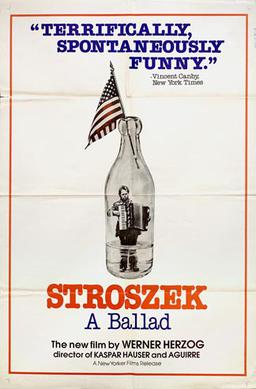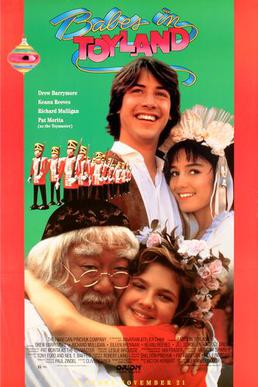
Robert Bernard Altman was an American film director, screenwriter, and producer. He is considered an enduring figure from the New Hollywood era, known for directing subversive and satirical films with overlapping dialogue and ensemble casts. Over his career he received several awards including an Academy Honorary Award, two British Academy Film Awards, a Primetime Emmy Award and a Golden Globe Award as well as nominations for seven competitive Academy Awards.

McCabe & Mrs. Miller is a 1971 American revisionist Western film directed by Robert Altman and starring Warren Beatty and Julie Christie. The screenplay by Altman and Brian McKay is based on the 1959 novel McCabe by Edmund Naughton. Altman referred to it as an "anti-Western" film because it ignores or subverts a number of Western conventions. It was filmed in British Columbia, Canada in the fall and winter of 1970, and premiered on June 24, 1971.

Gloria Rose "Barbara" Turner was an American screenwriter and actress. The actress Jennifer Jason Leigh is her daughter.

To Catch a Thief is a 1955 American romantic thriller film directed by Alfred Hitchcock, from a screenplay by John Michael Hayes based on the 1952 novel of the same name by David Dodge. The film stars Cary Grant as a retired cat burglar who has to save his reformed reputation by catching an impostor preying on wealthy tourists on the French Riviera.

Terence Marne O'Neill, Baron O'Neill of the Maine, PC (NI), was the fourth Prime Minister of Northern Ireland and leader (1963–1969) of the Ulster Unionist Party (UUP). A moderate unionist who sought to reconcile sectarian divisions in Northern Ireland society and met with his counterpart in the Irish Republic, he was a member of the Parliament of Northern Ireland for the Bannside constituency from 1946 until his resignation in January 1970.

Interstate 355 (I-355), also known as the Veterans Memorial Tollway, is an Interstate Highway and tollway in the western and southwest suburbs of Chicago in the U.S. state of Illinois. Like most other toll roads in the northeastern portion of the state, I-355 is maintained by the Illinois State Toll Highway Authority (ISTHA). I-355 runs from I-80 in New Lenox north to I-290 in Itasca, a distance of 32.5 miles (52.3 km). With the exception of a four-mile (6.4 km) expansion in 2009, from U.S. Route 34 to 75th Street, the highway is six lanes wide for its entire length.

The Illinois State Toll Highway Authority (ISTHA) is an administrative agency of the U.S. state of Illinois charged with building, operating, and maintaining toll roads in the state. The roads, as well as the authority itself, are sometimes referred to as the Illinois Tollway. The system opened in 1958 in the Chicago area, and has subsequently expanded to include the eastern and central sections of Interstate 88 (I-88) extending into the northwestern part of the state. Beginning in 2005, the system was reconstructed to include more lanes and open road tolling, the latter of which uses I-Pass transponders to collect revenue as vehicles pass antennas at toll plazas or designated entrance or exit ramps. As of 2017, ISTHA maintains and operates 294 miles (473 km) of tollways in 12 counties in Northern Illinois.

They Live by Night is a 1948 American film noir directed by Nicholas Ray in his directorial debut and starring Cathy O'Donnell and Farley Granger. Based on Edward Anderson's Depression-era novel Thieves Like Us, the film follows a young fugitive who falls in love with a woman and attempts to begin a life with her.

A Wedding is a 1978 American satirical comedy-drama film directed by Robert Altman, with an ensemble cast that includes Desi Arnaz, Jr., Carol Burnett, Paul Dooley, Vittorio Gassman, Mia Farrow, Lillian Gish, Geraldine Chaplin, Howard Duff, Nina Van Pallandt, Amy Stryker, and Pat McCormick. The story is told in typical Altman style, with multiple plots and overlapping humorous dialogue.

Stroszek is a 1977 West German tragicomedy film directed by Werner Herzog and starring Bruno S., Eva Mattes, and Clemens Scheitz. Written specifically for Bruno S., the film was shot in Plainfield, Wisconsin, and North Carolina. Most of the lead roles are played by inexperienced actors.

Fear in the Night is an American 1947 film noir crime film directed by Maxwell Shane, starring Paul Kelly and DeForest Kelley. It is based on the Cornell Woolrich story "And So to Death". Woolrich is credited under pen name William Irish. The film was remade by the same director in 1956 with the title Nightmare this time starring Edward G. Robinson playing the cop and Kevin McCarthy.
Georgie Porgie is the stage name used by the American house music producer and musician, George N. Andros, from Chicago, Illinois. He first had an entry on the US Billboard Hot Dance Club Play chart in 1994, and reached #1 for the first time in 2002 with "Love's Gonna Save the Day," a song that was written in response to the 9/11 terrorist attacks. In 2003, his song "I Love I Love" also hit #1 on the US dance chart, a third dance #1 came in 2005 with "Sunshine." In the UK Singles Chart he has had three entries with "Everybody Must Party" (1995), "Take Me Higher" (1996), and "Life Goes On" (2000).

The Long Goodbye is a 1973 American neo-noir film directed by Robert Altman, adapted by Leigh Brackett from Raymond Chandler's 1953 novel of the same name. The film stars Elliott Gould as Philip Marlowe and features Sterling Hayden, Nina Van Pallandt, Jim Bouton, Mark Rydell, and an early, uncredited appearance by Arnold Schwarzenegger.

Images is a 1972 psychological horror film directed and co-written by Robert Altman and starring Susannah York, René Auberjonois and Marcel Bozzuffi. The picture follows an unstable children's author who finds herself engulfed in apparitions and hallucinations while staying at her remote vacation home.

The Kraft Suspense Theatre is an American television anthology series that was produced and broadcast from 1963 to 1965 on NBC. Sponsored by Kraft Foods, it was seen three weeks out of every four and was pre-empted for Perry Como's Kraft Music Hall specials once monthly. Como's production company, Roncom Films, also produced Kraft Suspense Theatre.. Writer, editor, critic, and radio playwright Anthony Boucher served as consultant on the series.

Babes in Toyland is a 1986 American made-for-television Christmas musical film directed by Clive Donner and starring Drew Barrymore, Richard Mulligan, Eileen Brennan and Keanu Reeves. Based on the 1903 operetta of the same title by Victor Herbert and Glen MacDonough, this version features a new score by Leslie Bricusse along with select portions of Herbert's score.
Graeme Clifford is an Australian film director. His directing credits include the Academy Award-nominated film Frances, Gleaming the Cube and the mini-series The Last Don, which received two Emmy nominations.

The Late Show is a 1977 American neo-noir mystery film written and directed by Robert Benton and produced by Robert Altman. It stars Art Carney, Lily Tomlin, Bill Macy, Eugene Roche, and Joanna Cassidy.

Lady in the Fog is a 1952 British mystery film directed by Sam Newfield and starring Cesar Romero, Lois Maxwell and Bernadette O'Farrell. It was written by Orville H. Hampton based on the 1947 BBC radio serial A Lady in the Fog by Lester Powell.
Lou Lombardo was an American filmmaker whose editing of the 1969 film The Wild Bunch has been called "seminal". In all, Lombardo is credited on more than twenty-five feature films. Noted mainly for his work as a film and television editor, he also worked as a cameraman, director, and producer. In his obituary, Stephen Prince wrote, "Lou Lombardo's seminal contribution to the history of editing is his work on The Wild Bunch (1969), directed by Sam Peckinpah. The complex montages of violence that Lombardo created for that film influenced generations of filmmakers and established the modern cinematic textbook for editing violent gun battles." Several critics have remarked on the "strange, elastic quality" of time in the film, and have discerned the film's influence in the work of directors John Woo, Quentin Tarantino, Kathryn Bigelow, and the Wachowskis, among others. While Lombardo's collaboration with Peckinpah lasted just a few years, his career was intertwined with that of director Robert Altman for more than thirty years. Lombardo edited Altman's 1971 film McCabe & Mrs. Miller (1971), which had "a radical approach to the use of dialogue and indeed other sound, both in and beyond the frame." Towards the end of his career Lombardo edited Moonstruck (1987) and two other films directed by Norman Jewison. While his editing is now considered "revolutionary" and "brilliant", Lombardo was never nominated for editing awards during his career.















